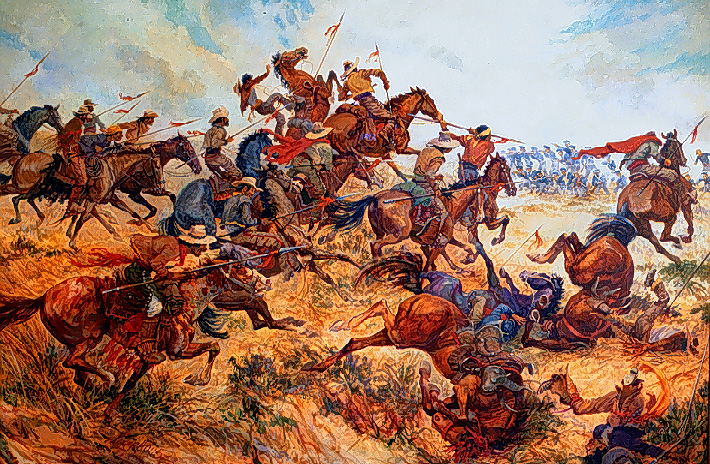December 6 in U.S. military history
1846: Gen. Stephen Watts Kearney’s U.S. Army of the West, accompanied by a small detachment of mounted rifle volunteers commanded by Marine Lt. Archibald Gillespie, attack Mexican “Californios” in the Battle of San Pasqual (featured image), near present-day San Diego. Both sides claimed victory and the engagement became one of the bloodiest of the Mexican-American War.
1917: A German U-boat torpedoes the destroyer USS Jacob Jones off the coast of England, which becomes the first U.S. destroyer to be sunk by a submarine.
1941: After an Australian scout plane spots a Japanese fleet near the Malayan Coast, the Allies presume that the Japanese plan to invade Thailand. However, British intelligence intercepts a radio signal warning to the Japanese fleet to be on full alert, prompting advisers to question whether the move is a diversion.
Meanwhile, Admiral Yamamoto tells his First Air Fleet “The rise or fall of the empire depends upon this battle. Everyone will do his duty with utmost efforts.”
Also, the Japanese fleet departs Palau for the invasion of the Philippines.
1950: American forces – primarily leathernecks of the now-famous 1st Marine Division, a few American soldiers, and a handful of British commandos – begin their epic “fighting withdrawal” from Hagaru-ri to Koto-ri and on to Hamnung, during the breakout from the Chosin Reservoir, Korea. At Koto-ri, a few officers express concern that their vastly outnumbered, bloodied, freezing, near-starving columns might not survive the final trek to Hamnung.
As the UN orders communist forces to halt at the 38th Parallel, U.S. and Australian planes kill an estimated 2,500 enemy troops.
1961: The U.S. Air Force is authorized to begin combat operations in Vietnam – provided they carry a Vietnamese national with them for training purposes.
1967: When his company was attacked by a battalion-sized enemy force in South Vietnam’s Bien Hoa Province, U.S. Army chaplain, Capt. Charles J. Liteky moved multiple times through heavy enemy fire to deliver last rights to dying soldiers and aid to wounded soldiers. Despite incoming small arms and rocket fire, Liteky stood up multiple times in order to direct the incoming helicopters to the landing zone. During the engagement, he would carry 20 wounded soldiers to the landing zone for evacuation. For his actions, Liteky is awarded the Medal of Honor.
1968: The Navy launches Operation GIANT SLINGSHOT to interdict the flow of men and weapons flowing through the Mekong Delta from the Cambodian border.
